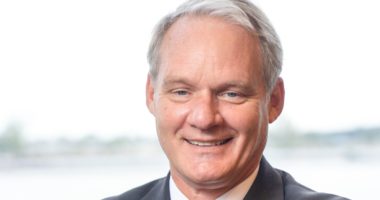 As part of our reform in 2014, the College redefined the role of the Advocacy Council (AC) as the branch of governance that “keeps practicing allergists abreast of critical socioeconomic and regulatory issues, assists in resolving complex payment disputes, monitors and lobbies state and federal elected officials and government agencies, and represents the profession before payers, managed care and other health care entities”. As a “Council,” the AC answers to the Board of Regents, but do not be fooled by its apparent subordinate position in our organizational structure. In fact, the AC functions in a nearly independent capacity to take on the many complex challenges facing our specialty in 2017. Led by Alan Meadows, MD, FACAAI, chair, and Jim Sublett, MD, FACAAI, executive director of governmental affairs, the AC team has retained the infrastructure of its prior 40-year existence as the Joint Council.
As part of our reform in 2014, the College redefined the role of the Advocacy Council (AC) as the branch of governance that “keeps practicing allergists abreast of critical socioeconomic and regulatory issues, assists in resolving complex payment disputes, monitors and lobbies state and federal elected officials and government agencies, and represents the profession before payers, managed care and other health care entities”. As a “Council,” the AC answers to the Board of Regents, but do not be fooled by its apparent subordinate position in our organizational structure. In fact, the AC functions in a nearly independent capacity to take on the many complex challenges facing our specialty in 2017. Led by Alan Meadows, MD, FACAAI, chair, and Jim Sublett, MD, FACAAI, executive director of governmental affairs, the AC team has retained the infrastructure of its prior 40-year existence as the Joint Council.
As an ex-officio member of the AC Board, I can tell you that the AC team communicates literally every day as it tirelessly rises to the occasion time after time. For example, at each twist and turn concerning the proposed changes to USP 797 and the FDA’s guidance document on “Insanitary Conditions at Compounding Facilities,” the AC team quickly weighs in with each other and with College leadership. This streamlined communication enables College Leadership to make critical informed decisions regarding next steps, including how to effectively coordinate with AAAAI leaders to best serve our members, the specialty and our patients. Similarly, the AC played a critical role in the College’s contribution to the Venom Shortage Task Force, including its recently published report.
As College President I am humbled by the resources that support the College leadership team, including the College staff, the AC and other councils and committees. As a sailor, when I think of the AC I am reminded of the qualities of a keel – hidden from view, but providing ballast for stability while also converting the sideways motion of the wind into forward motion of the ship. Together with the Executive Committee and the Board of Regents, I get to help steer the ship this year, and I can tell you that plotting and maintaining a true course would be impossible without the tremendous work of the AC.
Stephen A. Tilles, MD, FACAAI
ACAAI President
